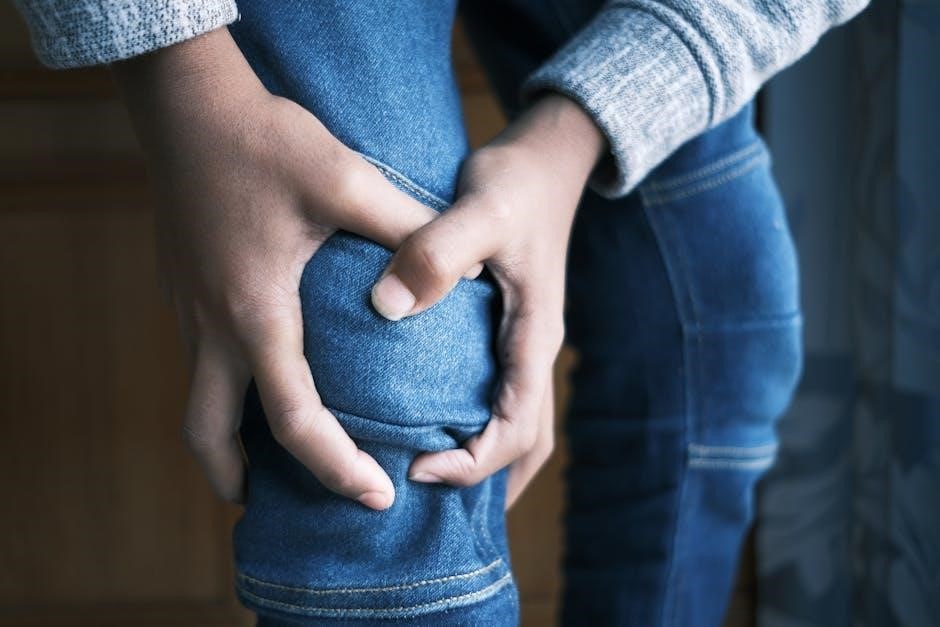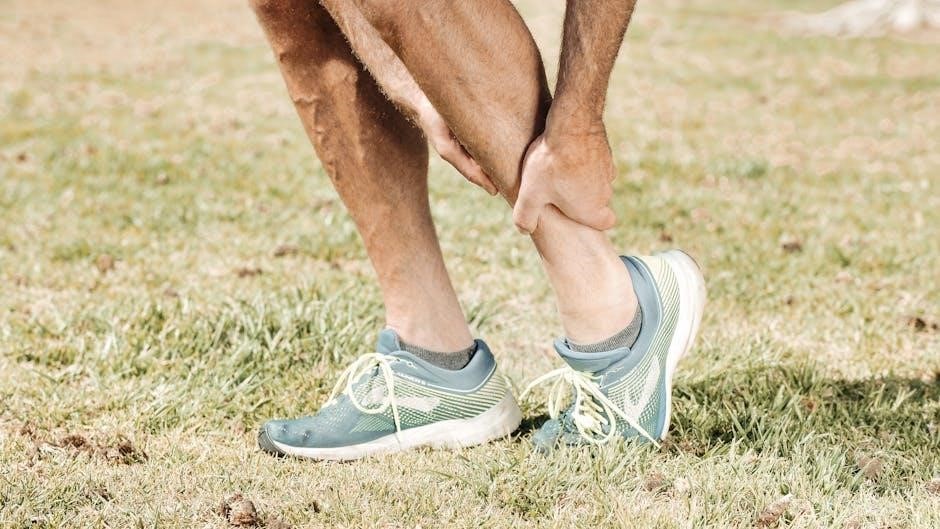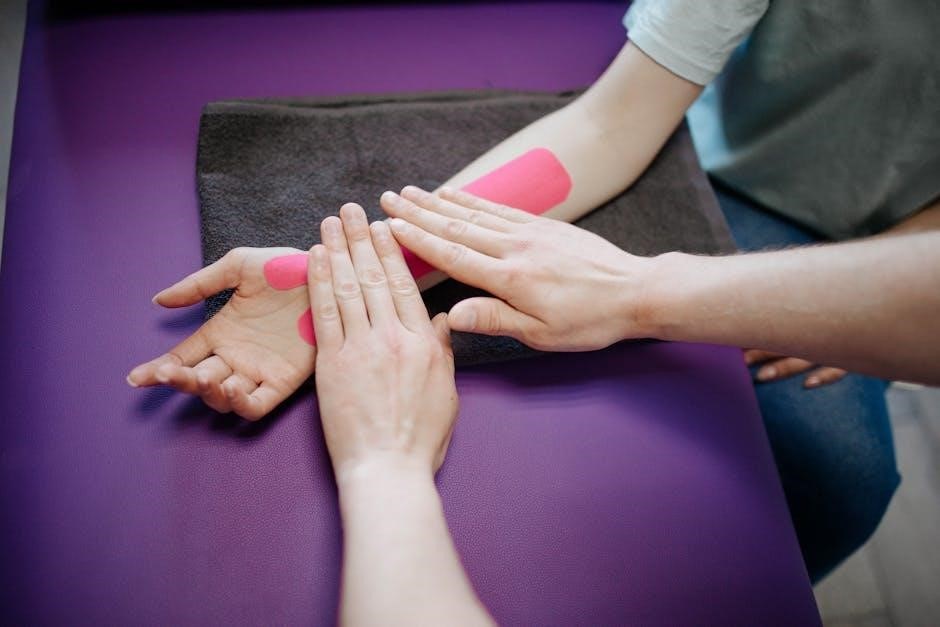The sacroiliac joint‚ located between the sacrum and ilium‚ plays a vital role in lower back stability and mobility. Dysfunction can cause significant pain and discomfort‚ often radiating to the buttocks and thighs. Addressing SI joint pain is crucial‚ as ignoring it can lead to chronic issues impacting daily activities. Early diagnosis and proper exercises are essential for effective management and restoring mobility.
1.1 Understanding the Sacroiliac Joint and Its Role in Lower Back Stability
The sacroiliac joint‚ located between the sacrum and ilium‚ is a critical structure for lower back stability. It is stabilized by strong ligaments and plays a key role in absorbing shock and distributing weight during movement. Proper function of the SI joint is essential for maintaining mobility and preventing pain. Dysfunction or inflammation in this joint can disrupt lower back stability‚ leading to discomfort and limiting daily activities. Understanding its structure and function is vital for addressing related pain effectively.
1.2 Why SI Joint Pain Exercises Are Essential for Recovery
SI joint pain exercises are crucial for recovery as they enhance joint stability‚ improve mobility‚ and reduce inflammation. Gentle stretches and strengthening exercises help alleviate pain and prevent chronic issues. These exercises promote proper alignment and muscle balance‚ essential for long-term relief. Regular practice also improves posture and reduces strain on the joint. Tailored exercises‚ guided by the Fortin Finger Test results‚ ensure a personalized approach to healing and restoring function.

Common Causes and Risk Factors of SI Joint Pain
Inflammation and joint misalignment are primary causes‚ while pregnancy‚ arthritis‚ and poor posture are significant risk factors leading to SI joint pain and discomfort.
2.1 Inflammation and Misalignment of the Sacroiliac Joint
Inflammation in the sacroiliac joint can cause pain‚ stiffness‚ and limited mobility. Misalignment or dysfunction often results from trauma‚ poor posture‚ or repetitive strain‚ leading to instability. This instability disrupts the joint’s normal function‚ causing discomfort. Inflammation may be triggered by conditions like arthritis or overuse‚ while misalignment can develop from uneven wear and tear. Both factors contribute to chronic pain‚ often worsening with specific movements or activities. Addressing these issues is key to effective pain management and restoring joint stability.
2.2 Pregnancy‚ Arthritis‚ and Other Medical Conditions as Risk Factors
Pregnancy increases the risk of SI joint pain due to hormonal changes‚ weight gain‚ and shifts in posture‚ which strain the joint. Arthritis‚ particularly osteoarthritis and rheumatoid arthritis‚ can cause inflammation and degeneration in the SI joint. Other conditions like scoliosis or previous pelvic injuries also heighten susceptibility. These factors weaken joint stability‚ leading to pain and discomfort. Recognizing these risks allows for early intervention‚ such as targeted exercises and lifestyle adjustments‚ to manage symptoms effectively and prevent further complications.

Symptoms of SI Joint Pain
SI joint pain typically manifests as discomfort in the lower back‚ buttocks‚ or thighs. It may present as dull aches or sharp pains‚ often worsening with activity.

3.1 Identifying Pain Locations: Lower Back‚ Buttocks‚ and Thighs
SI joint pain often radiates to the lower back‚ buttocks‚ and thighs‚ with discomfort typically felt on one side. Pain may range from mild to severe‚ sometimes extending to the knee. Activities like sitting‚ standing‚ or twisting can exacerbate symptoms. Sharp pains during movement or dull aches at rest are common. While pain originates in the SI joint‚ it can spread to surrounding areas‚ making it essential to identify these locations for accurate diagnosis and effective treatment.

3.2 Understanding Pain Characteristics: Dull Aches vs. Sharp Pains
SI joint pain can present as dull aches or sharp‚ stabbing pains‚ depending on the underlying cause. Dull aches often occur during rest or prolonged sitting‚ while sharp pains may arise with movement‚ such as twisting or bending. Pain intensity can vary‚ making it essential to monitor and document these characteristics. Understanding whether the pain is constant or intermittent‚ and its severity‚ helps guide appropriate management strategies and improve treatment outcomes for individuals with SI joint pain.

Diagnosis of SI Joint Pain
Diagnosis involves physical exams‚ imaging tests‚ and challenge tests to identify pain sources. Accurate assessment ensures targeted treatment and effective management of SI joint dysfunction.
4.1 Physical Exams and Imaging Tests for SI Joint Pain
Physical exams assess joint mobility‚ tenderness‚ and muscle imbalances. Imaging tests like X-rays or MRIs help visualize joint inflammation or structural issues. These tools guide accurate diagnosis.
4.2 The Role of the Fortin Finger Test in Diagnosing SI Joint Pain
The Fortin Finger Test is a reliable diagnostic tool for SI joint pain. It involves palpation of the joint to assess tenderness and pain response. Recognized for its accuracy‚ this test helps confirm SI joint dysfunction when combined with other clinical findings. It is often used alongside imaging tests for a comprehensive diagnosis‚ ensuring effective treatment plans are developed.
Safe and Effective SI Joint Pain Exercises
Targeted exercises can alleviate SI joint pain by improving flexibility‚ strength‚ and joint stability. Gentle stretches‚ core-strengthening movements‚ and low-impact activities are recommended for effective relief and recovery.

5.1 Gentle Stretching Exercises for the Sacroiliac Joint
Gentle stretching exercises are crucial for alleviating SI joint pain by improving flexibility and reducing stiffness. The single knee-to-chest stretch and pelvic tilts are effective options. Lie on your back‚ bend one knee toward your chest‚ and hold for 30 seconds. Repeat on the other side to ensure balanced relief. These stretches promote joint mobility without causing discomfort‚ making them ideal for early recovery phases. Always perform within a pain-free range to avoid aggravating the joint.
5.2 Strengthening Exercises to Support the Pelvic Region
Strengthening exercises are vital for stabilizing the pelvic region and alleviating SI joint pain. Bridges and bird dog exercises are highly effective. Lie on your back‚ knees bent‚ and lift your hips while squeezing your glutes. For bird dogs‚ start on all fours and extend one arm and the opposite leg‚ holding for 5 seconds. These exercises enhance core and pelvic muscle strength‚ providing better joint support and reducing discomfort. Perform 3 sets of 10-15 repetitions‚ ensuring proper form to avoid injury.
5.3 Stabilization Exercises to Improve Joint Mobility
Stabilization exercises enhance sacroiliac joint mobility by strengthening surrounding muscles. Single knee-to-chest stretches and pelvic tilts are effective. Lie on your back‚ bring one knee toward your chest‚ and hold for 30 seconds. For pelvic tilts‚ engage your core and gently arch your lower back. These exercises improve joint stability and flexibility‚ reducing stiffness. Perform 3 sets of 10 repetitions daily‚ ensuring smooth‚ controlled movements to avoid discomfort. Consistency helps maintain proper joint alignment and mobility over time.
Tips for Reducing SI Joint Pain During Daily Activities
Avoid heavy lifting and repetitive bending. Take regular breaks to stretch and move. Maintain proper posture and use ergonomic furniture. Engage in low-impact activities like swimming to reduce strain on the sacroiliac joint while promoting overall well-being.
6.1 Proper Sleeping Positions to Alleviate SI Joint Pain
Sleeping on your back with a pillow under your knees can reduce strain on the sacroiliac joint. For side sleepers‚ place a pillow between your knees to maintain alignment. Avoid stomach sleeping‚ as it can misalign the pelvis. Use a supportive mattress and consider a body pillow for added stability. Experiment with positions to find what alleviates discomfort most effectively‚ ensuring the SI joint remains in a neutral position to prevent aggravation during rest.
6.2 Modifying Activities to Avoid Aggravating the Sacroiliac Joint
Modifying daily activities is crucial to prevent SI joint aggravation. Avoid repetitive movements‚ heavy lifting‚ or prolonged sitting. Use proper lifting techniques‚ bending at the knees instead of the waist. Take regular breaks during tasks and opt for low-impact exercises like swimming or yoga. Avoid twisting or sudden movements that strain the pelvis. Incorporating ergonomic adjustments and using assistive devices can also reduce stress on the joint‚ promoting long-term comfort and preventing further irritation.

When to Seek Professional Help
Consult a healthcare professional if SI joint pain persists or worsens despite exercises. Severe pain‚ limited mobility‚ or persistent discomfort warrant medical evaluation.
7.1 Signs That Indicate the Need for Medical Intervention
Severe pain lasting over a week‚ limited mobility‚ or pain radiating below the knee are signs to seek medical help. If exercises worsen symptoms or fail to relieve pain‚ consult a professional. Persistent discomfort‚ especially at night‚ or inability to perform daily activities also warrant intervention. A healthcare provider can offer advanced treatments or physical therapy to address underlying issues effectively.
7.2 The Role of Physical Therapy in Managing SI Joint Pain
Physical therapy is crucial for managing SI joint pain‚ focusing on improving joint mobility and strengthening surrounding muscles. A therapist creates personalized exercise plans‚ including stretching and strengthening routines. They also educate patients on proper posture and movement techniques to avoid aggravating the joint. Regular physical therapy sessions can significantly reduce pain and restore functional ability‚ making it an essential component of long-term SI joint pain management.

Consistent exercise and lifestyle modifications are essential for managing SI joint pain effectively. Regular routines and proper care can significantly improve mobility and reduce discomfort over time.
8.1 The Importance of Consistency in Exercise and Lifestyle Modifications
Consistency in performing SI joint exercises and adapting lifestyle habits is crucial for long-term pain relief and improved mobility. Regular routines help strengthen pelvic muscles‚ enhance joint stability‚ and prevent flare-ups. Over time‚ these practices reduce discomfort and restore function‚ allowing individuals to engage in daily activities without limitation. Persistence in therapy and self-care ensures sustainable progress and overall well-being.

